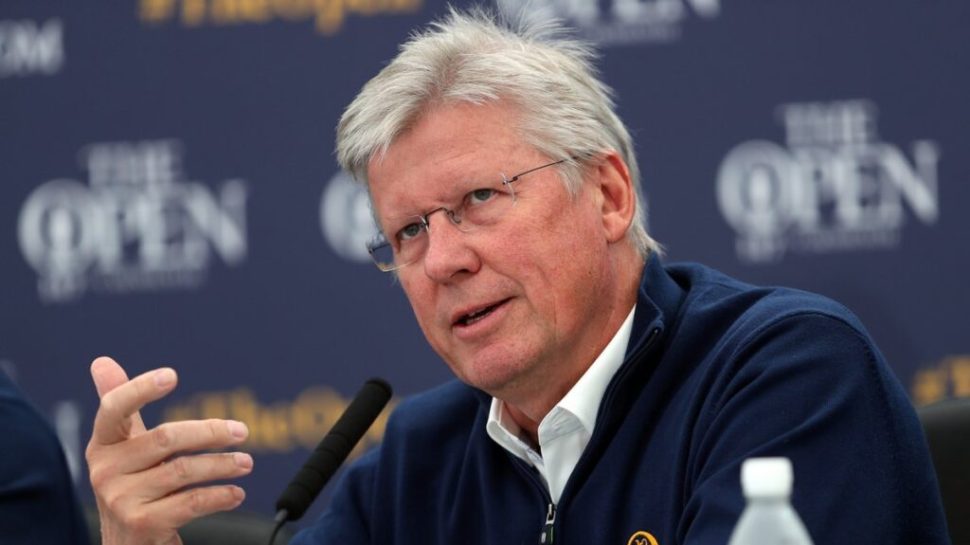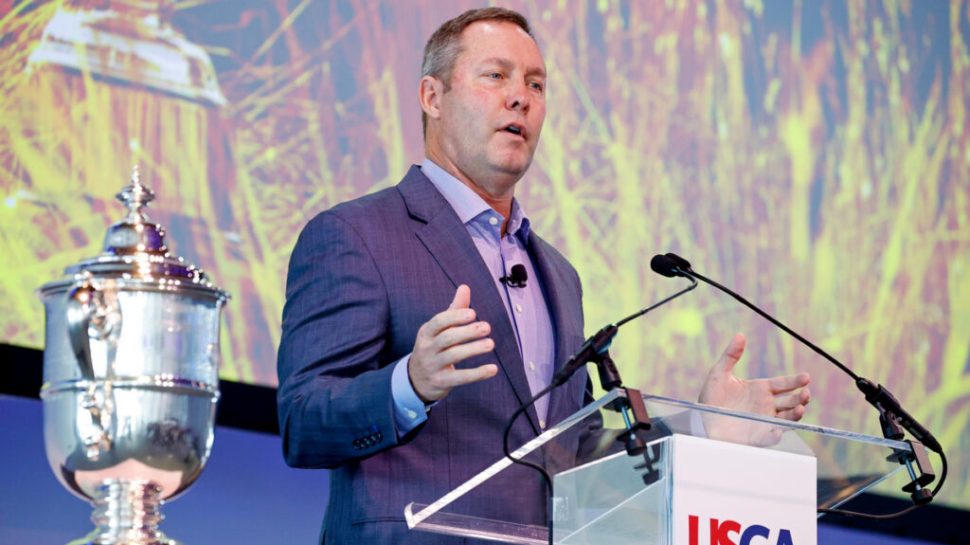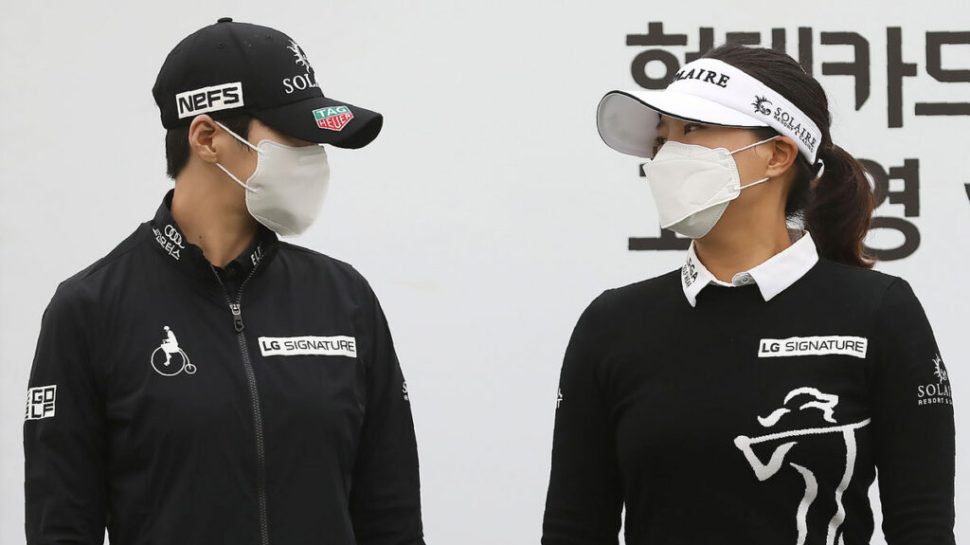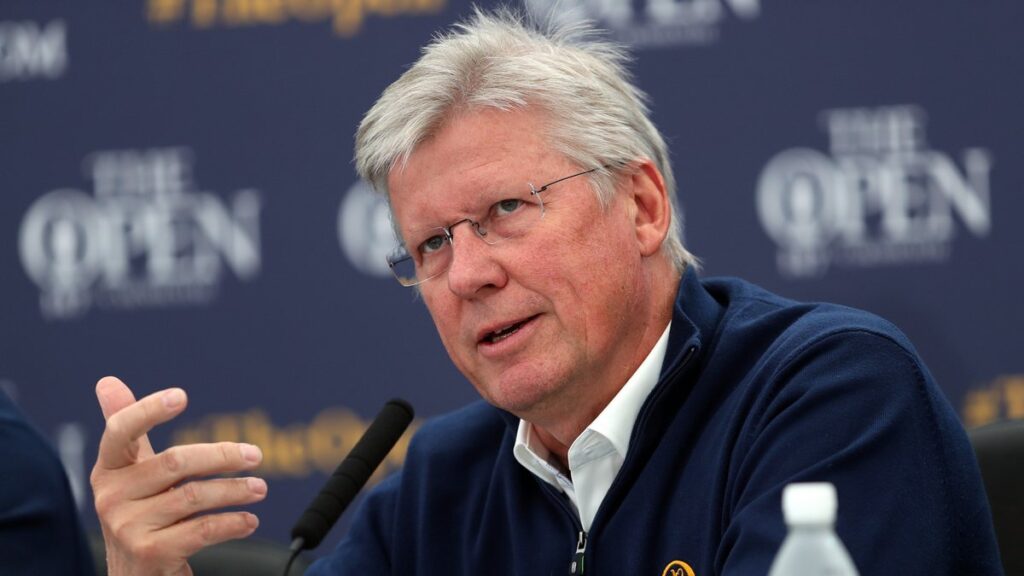Estimated reading time: 13 minutes
As 2021 slides into the memory banks a new year is now here. A number of critical challenges face the broader golf community from those specifically on the competitive aisle for men and women to those more broadly within the industry of the sport.
Complete answers may or may not emerge quickly but resolution of these matters will shed considerable light on how golf in general fares in 2022 and beyond.
Can Tiger return to competitive golf form?
After sustaining a serious car crash injury on February 23, 2021, the intersection of Tiger Woods and competitive golf came to a complete halt. Remarkably, Woods emerged from the dark shadows and competed with his son Charlie at the PNC Championship this past December.
The golf Woods demonstrated in concert with his son was impressive but the context of a 36-hole event needs to be kept firmly in mind. Woods freely admitted returning to the highest level of competitive golf remains a work in progress.
However, playing in a 36-hole event — with the aid of a power cart — is one thing. Playing four consecutive days in a solo capacity when walking is de rigueur is quite another. At various times Woods grimaced and his wherewithal to push off his right side when making full swings with the driver seemed tentative.
The road ahead is fraught with unknowns — particularly when seeking to attain competitive golf form against the best players in the game.
The 46-year-old Woods added, “I’m not at that level. I can’t compete against these guys right now, no. It’s going to take a lot of work to get to where I can feel I can compete with these guys and be at a high level.”
“I like competing,” he said. “I’m not going to play a full schedule ever again. I’m going to have to pick and choose what events, and even then, my body might not cooperate with that.”
Woods is well aware of the expectations placed on him from all sources. But he has freely admitted he has climbed his version of golf’s Mount Everest when returning to form and capturing the 2019 Masters. Is he now prepared to put the time and energy to do that again?
Plenty of people have attempted to forecast what Tiger will do and many times ultimately erred badly. The Woods watch will undoubtedly be the most interesting question to be answered in 2022.
Can the Saudis successfully push into professional golf and how will the PGA Tour respond?
Within professional golf the PGA Tour has been the dominant staging area — routinely attracting the game’s premier player and competing for the most lucrative monetary prizes. What appeared to be an unending monopoly is being challenged.
A new rival is now emerging — one that could turn into a high-stakes affair pushing the best players to decide where their loyalty –and pocketbooks — reside.
Saudi Arabia has attempted to push its presence forward with an unrelenting wherewithal to grab the spotlight and doing so with financial resources serving as the quintessential lure to attract golf’s superstars.
The PIF Saudi International took place last week and in the field were a number of PGA Tour stars including two-time winner Dustin Johnson, Bryson DeChambeau and Phil Mickelson, among a laundry list of other key names internationally based.
.@PhilMickelson chips it close for birdie on 7th 💪@SaudiIntlGolf #SaudiIntlGolf #whereitsAT pic.twitter.com/aVHf4dhPFe
— Asian Tour (@asiantourgolf) February 4, 2022
For PGA Tour members, it took a release to be granted the opportunity to play in Saudi Arabia. The Tour gave releases contingent on them competing in the AT&T Pebble Beach Pro-Am in future years. This week both events are aligned together and the PGA Tour’s major concern is that a marquee event which highlights an iconic venue like Pebble Beach and which has been bankrolled significantly by AT&T over many years is not undercut in the future.
PGA Tour members were granted the release with the stipulation that some will need to play the AT&T at least once over the next two years while others will need to play twice over the next three years.
The PGA Tour operationally provided $367 million in prize money in 2021 but the pockets of the Saudis are fully capable of digging even deeper. The top brass on the PGA Tour is fully aware of this and have stated through Commissioner Jay Monahan that any player aligning with the Saudi effort will be banned from playing PGA Tour events. Seth Waugh, CEO of the PGA of America, also raised the stakes in commenting at the ’21 PGA Championship that USA players who opt for the money tree provided by the Saudis would not be on the American side for future Ryder Cups.
“If someone wants to play on a Ryder Cup for the U.S., they’re going to need to be a member of the PGA of America, and they get that membership through being a member of the tour,” Waugh said Tuesday. “I believe the Europeans feel the same way. And so, I don’t know that we can be more clear than that.”
Critics have been quick to pounce on the Saudis for “sportswahing” — the attempt to use sports as a vehicle to camouflage the abysmal human rights record within the Kingdom. Other countries, most notably China, have also been cited for attempting to use sports as a vehicle to mask poor records in dealing with minorities in their own country.
To counter such attempts in luring the best players the PGA Tour created a $40 million fund called the Player Impact Program (PIP). The fund is divided among the top ten players but the awarding of money is based on a range of metrics including appearances via social media, among other criteria. The PGA Tour will award the leading figure the sum of $8 million in mid-February. Interestingly, the PIP has only come onto the scene recently with the ascension of the Saudi effort.
The Saudi Super Golf League will include key events in Asia and the point person for this push is former world number one ranked player Greg Norman. Curiously, it was the Aussie who pushed for a world golf tour during his prime playing days but such an idea was rejected by the PGA Tour under the leadership of then Commissioner Tim Finchem. Not long thereafter the PGA Tour copied the concept with the creation of World Golf Championship (WGC) events to the chagrin of Norman.
Birdie by the Red Sea 🌊 @asiantourgolf @SaudiIntlGolf pic.twitter.com/EA47V4YAwm
— Lee Westwood (@WestwoodLee) February 5, 2022
To sweeten the pot in 2022, the PGA Tour raised overall purses of $100 million. There are also increases in various bonus pools as well as key events, most notably with The Players Championship having a total purse of $20 million, the most among any 72-hole events globally — up $5 million from 2021 and offering a first prize of $3.6 million — up from the $2.7 million Justin Thomas made from his ’21 triumph.
Why all the money being doled out now? Simple. The PGA Tour realizes without a preemptive strike it may be possible for the Saudi effort to gain a serious toehold with several players.
This past week’s event in Saudi Arabia is only the first salvo in what is likely to transpire in the months ahead. The top players have uniformly stated they are not politicians and are playing to support to their careers and families. For those who played in Saudi Arabia – the mercenary equation rates over the moralist one.
The key question remains to be answered — in a high stakes poker game which side will ante even more to secure a toehold at the highest level of professional golf? How this plays out in 2022 and beyond could create a colossal collision between forces that refuse to blink and create ramifications hard to definitively decipher at this present moment.
How will the LPGA Tour and new Commissioner fare?
After an 11-year run as LPGA Commissioner, Mike Whan hitched his wagon to taking over as CEO for the United States Golf Association (USGA). Taking on Whan’s position is the former Princeton University Athletic Director Mollie Marcoux Samaan.
The challenge for Samaan will be in expanding the visibility of the LPGA through live television events — especially at the major network level. Even with Whan’s non-stop promotional efforts the LPGA has generally received scant media attention and even less overall fan interest when contrasted to the concentration of eyeballs on the men’s professional game.
LPGA purses in 2022 will reach a record level of nearly $86 million through 34 events. But securing exposure is crucial for the wider dynamic of meaningful awareness in a competitive and cluttered sports universe.
.@LPGA Commissioner Mollie Marcouz Samaan knows @ProMedicaHealth‘s support of the #USWomensOpen will have a huge impact on the future of the women’s game! 💯 pic.twitter.com/15O3TWM0Q7
— U.S. Women’s Open (USGA) (@uswomensopen) January 7, 2022
Breaking through that clutter will be a central point of emphasis. The good news is that stellar venues have come forward in hosting a number of key events for the best female players.
The Women’s Open will be played in July at Muirfield in Scotland — the first time the iconic club has hosted a female major championship. The KPMG Women’s PGA Championship will be in June at storied Congressional CC just outside of Washington, D.C. The U.S. Women’s Open returns for the 3rd time to Pine Needles in Pinehurst, NC.
The momentum for women’s professional golf is growing but without an active and consistent television connection the likelihood of top tier players resonating with the golfing public at-large will be increasingly slim and it will be difficult to escape from their overall invisibility. That is what the new Commissioner faces and what the LPGA Tour must overcome.
Out of sight can quickly turn to out of mind. That’s not a promising pathway — that can be a fatal dead end.
The golf ball debate – will the USGA and R&A finally act?
Early in 2021 the USGA and R&A put forward a report spelling out their findings in terms of the debate on the impact of distance gains made by golf balls on the various pro tours. The governing bodies stated clearly that continued distance gains from today’s golf balls cannot be sustained. That a meaningful correction would be needed. The issue at-hand is not whether golf balls are indeed flying further at the elite levels but what concrete and meaningful solutions the governing bodies plan on implementing?
Those playing golf at the highest levels do indeed play the same game in a general sense as ordinary golfers. However, the manner by which the best players in the world are able to reap the benefits of golf ball technology is clearly on a far different level than among golf’s masses.
A straightforward solution in having a bifurcated system — having elite players play a different ball than the general golf community. That reform is not favorably viewed by the USGA and R&A. More importantly, the PGA Tour, the 800-pound gorilla in all such matters, is in alignment with the golf ball production companies and both do not want that reform seeing the light of day.

The USGA and R&A have enacted minor reforms such as limiting the length of drivers and capping clubhead size. But the more pressing question is whether the ruling bodies have the desire to bring forward sweeping changes that might prove difficult to enforce beyond the events they stage and whether such actions invite litigation from the most impacted parties.
There’s also the public relations campaign that would likely occurs While a good number of PGA Tour players average over 300 yards on a tee shot, the average male golfer’s tee shot travels considerably less distance at just under 220 yards. Will Joe average golfer want a golf ball that travels less when he does not hit it far already?
There’s little question that improved swing techniques along with intense training have been most helpful for elite players at the top of golf’s pyramid. The overall athleticism of players, both male and female, have also improved and will likely continue to do so. One only needs to see the transformation Bryson DeChambeau underwent.
The USGA and R&A have gone through a protracted “study and collaboration” efforts. Now the central issue remains. — will concrete actions be taken by the governing bodies or will all the talk amount to the Texas phrase — all hat and no cattle? The stakes are huge. The ramifications far lasting.
Rolling back the golf ball is not the kind of news a number of key stakeholders in golf want to hear. The USGA and R&A have both stated the need to downsize the footprint of golf courses — both from a financial perspective and environmental one. Moving towards 8,000-yard championship courses would have seemed ludicrous just a few years ago but that likelihood cannot be ruled out now.
Can meaningful answers be brought to bear that can work at the elite level while not impacting those at the recreational level? That’s hard to say with any certainty. Bifurcation in some form may be needed but with that comes the very real possibility of deep pocketed challenges via litigation.

Are both the USGA and R&A prepared to defend themselves should litigation ensue? Is this the issue they are prepared to draw a clear line in the sand to defend? Undoubtedly, nothing less than the credibility of the USGA and R&A rests on how this situation is handled. Being golf’s referee clearly is not an enviable position.
The golf ball debate cuts across the widest spectrum of interested parties. Entities such as the PGA Tour may align with golf ball companies given the shared interest in supporting one another. It’s quite possible that either or both may reject the findings stated by the USGA and R&A. Then what happens?
What’s clear is that doing nothing provides for a certain outcome. Is that desirable? Or does implementing something on a comprehensive level create unintended consequences unforeseen?
Stay tuned.
Can golf’s rising popularity, spurred on by the pandemic, continue?
The growth of rounds played during the pandemic has been a fascinating development. However, the main reason for the growth of rounds played has come from existing core players playing more. The reason for that is obvious. Shutdowns imposed when the pandemic surged forced people not to travel and remain local. Golf provided the perfect foil to the dangers the pandemic caused in creating needed space between players, and more importantly, being played outdoors.
Interestingly, when one compares 2021 to 2019 (pre-pandemic, rounds were up roughly +18%. The pandemic has clearly provided a major financial shot in the arm when just a few years back the storyline was more focused on course closures and how the total number of active golfers was tumbling downwards.

Many private clubs in and around major metro areas now have waiting lists for membership. There has also been an investment growth among such clubs in updating facilities and widening the appeal for family involvement. What many questioned just a few years ago regarding private club relevance has certainly changed the storyline. The larger question remains — does the spike upward sustain itself going forward?
Golf has also seen a rise in females playing — especially among girls. But as the pandemic fades from view will Millennials and Generation X and Y continue to provide sufficient numbers in replacing Baby Boomers as they age out?
Keeping players engaged and motivated to remain with the sport is now the central focus. The pandemic provided a much-needed shot in the arm but whether traditional golf can sustain that momentum is a major question mark remaining to be answered.
